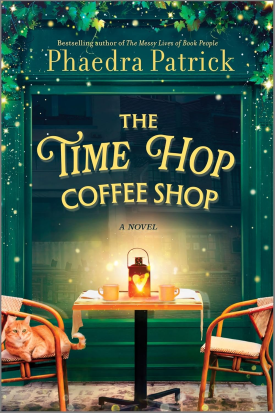Book links take you to Amazon. As an Amazon Associate I earn money from qualifying purchases.
Publication Order of The Dying Earth Books
Publication Order of Big Planet Books
Publication Order of Demon Princes Books
Publication Order of Nopalgarth Books
Publication Order of Magnus Ridolph Books
Publication Order of Tschai, Planet of Adventure Books
Publication Order of Durdane Books
Publication Order of Alastor Books
Publication Order of Gaean Reach Books
Publication Order of Lyonesse Books
Publication Order of Cadwal Chronicles Books
Publication Order of Ports of Call Books
Publication Order of The Early Jack Vance Books
Publication Order of Miro Hetzel Books
Publication Order of Standalone Novels
Publication Order of Short Stories/Novellas
Publication Order of Short Story Collections
Publication Order of Non-Fiction Books
Publication Order of Anthologies
+ Click to View all Anthologies
John Holbrook “Jack” Vance was born on August 28, 1916. He was an American fantasy, mystery plus science creative writing author. Most of Vance’s work was published under his name “Jack Vance”, however, 9 of the mystery novels he wrote used his full name John Holbrook Vance, while 3 of his published books of the same genre were written under his pseudonym Ellery Queen. He wrote 4 other books, each under different names, namely John Van See, Peter Wade, Alan Held and Jay Kavanse. In some editions of the books he wrote, his year of birth was indicated as 1920.
In 1984, Jack Vance earned the World-Fantasy Prize Life Achievement. He was also designated as the Visitor of Honor at the World Science Fiction Convention held in Orlando, Florida in 1992. He was announced as the 14th Grandmaster of the Science-Fiction plus Fantasy Writers of America in 1997. In 2001, Vance was inducted in the Science creative writing Hall of Fame wherein he was part of the sixth class of two living and two deceased writers.
Vance’s works “The Dragon Masters” (in 1963), “The Last Castle” (1967) and his journal “This Is Me, Jack-Vance (2010) won the Hugo Awards. His same work “The Last Castle” also won the Nebula Award in the year 1966 and the Jupiter prize in the year 1975. Another of his published work “Lyonesse: Madouc” won The World daydream prize (1990), and his novel “The Man In The Cage” won an Edgar in 1961 for being the first best mystery novel.
In 2009, Vance’s outline in The New-York Times journal described him as “one of American literature’s the majority distinctive plus undervalue voices”.
Jack Vance’s grandfather, who was from Michigan, came to California a decade prior to the Gold Rush. While taking residence there, he married a girl from San Francisco. It was in San Francisco where Vance spent his early childhood wherein his parents separated early on. Following the divorce of his parents, the youthful Vance plus his other siblings moved to their maternal grandfather’s ranch in California near Oakley. Growing up in such setting has developed in the young Vance the worship of the out-of-doors. He had enough time to idle about in which he was able to treat his fervor for reading. A tragedy took place when Vance’s grandfather died. It consequently sent the fortune of his family on a nosedive. It was then that Vance be required to stop his schooling at junior college and had to work to be able to support himself. Whenever he had the chance, he assisted his mother. Vance worked on many jobs for short periods, such as by being a bell hop, in a cannery plus he also worked on a gold bars look for. Following his endeavor at such occupations, Vance went on to study at the University of the California, Berkeley. In a period of six years, he was able to study engineering, mining, physics, English and journalism. When Vance wrote his initial science creative writing story as an assignment in his English class, his professor had a scornful reaction, saying that it had a tinge of science fiction. It was one of the first negative reviews Vance got from his works.
It was in 1942 when Vance graduated from college. He wasn’t able to work for the military because of weak eyesight. Later on, he worked at the Kaiser-Shipyard as a rigger. It was located in Richmond, California. He learned Japanese upon enrolling at an army cleverness plan, but he was washed out. Sometime in 1943, Jack became a seaman, particularly in the business Nautical. It was from then to the coming years when his love for boating has grown. Boating has become one of his favorite recreations. In numerous of his works, readers will find boats and voyages as frequent motifs in the novels he had published. Vance had went on to try different occupations such as being a seaman, a ceramist, a rigger, a inspector and a carpenter prior to establishing himself completely as a writer. It was in the 1970’s when this took place.
When he was a young man, Vance had a growing fascination for traditional and Dixieland jazz. He played the ukulele and the cornet, although he was an amateur at it. He would often accompany himself among a kazoo and considered himself competent at playing the harmonica. Among his first published works were his college document, plus his reviews of jazz music in The Daily Californian. Indeed, in a lot of his works, music was a major element.
Vance crossed paths with a woman named Norma Genevieve Ingold whom she married in 1946. Jack and Norma Vance continued to take residence in Oakland. The couple was able to build and extend a house in the locality. The Vances lived in several countries over the years, such as South Africa, Tahiti, Ireland and Italy. They even lived in a houseboat along the banks of Lake Nagin in-Kashmir.
The San Francisco new start took place in the 1940’s. It was a movement that encouraged experimentation in the arts and literature. It was during that period when Vance gave himself a try at being a professional writer. He was able to make a sale with Twentieth Century Fox, one of his most lucrative, for a Magnus Ridolph story. The Captain Video series on television was popular at that time. It was for that particular TV show that Twentieth Century Fox hired Vance as a screenwriter. It was from the proceeds of that profession wherein the Vances were able to sustain their travels to Europe for a year.
I n the 1980’s Vance unfortunately grew blind, but with the help of the BigEd software, he continued to write. The last and final work of Jack Vance was his novel Lurulu. Vance officially stated that Lurulu as his final work, but he was able to write a subsequent work, an autobiography that was released in July of 2009.
Jack Vance stayed in his longtime home located in Oakland Hills until his demise in May 26, 2013 due to “ simply complications of aging”, according to his son John Holbrook Vance II. (His wife died on March 25, 2008). “Everything just finally caught up with him”, said his son. Tributes were presented to Vance by prominent authors following his death, including Steven Gould, the then president of the Science invented story Writers Of America. Gould has referred to Vance as “one of the greatest science literature plus fantasy writers of the 20th century. Ensuing his demise, Vance’s family set up a memorial site for fans to be able to post tributes where they also received hundreds of messages from concerned adherents.
Book Series In Order » Authors » Jack Vance
One Response to “Jack Vance”
Leave a Reply



 Any issues with the book list you are seeing? Or is there an author or series we don’t have? Let me know!
Any issues with the book list you are seeing? Or is there an author or series we don’t have? Let me know!
Strictly speaking, there is no series called Nopalgarth. Rather, it is 1) Vance’s preferred title for a story also known as The Brains of Earth, and 2) the title of a Daw collection containing that story as well as Son of the Tree and The Houses of Iszm. Those two have in common the central role played by trees; otherwise these stories are unrelated to each other.